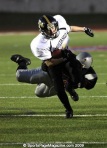One Sport Voice will return next week after a little holiday break. Look for the best and worst of women’s sport in 2010.
Go UConn!
21 12 2010After hearing about Favre’s ongoing litany of injuries (yawn) and the Vikings historic outdoor game in the TCF Bank Stadium (home to the Gopher Football team) altogether too much in the last week, I’m giving a shout out to the UConn Women’s Basketball team.
I sincerely believe they will break the longest winning streak in D-I basketball and continue to amass wins this season. They are an amazing group of athletes with a very accomplished coach and it is exciting to see the writing of history.
Good luck Huskies!
Comments : 1 Comment »
Tags: college basketball, UConn, winning streak
Categories : coaches
Predictions on media coverage about UConn Women’s Basketball winning streak
16 12 2010I have a couple predictions about how the media will talk about the UConn women’s basketball team as they (hopefully) tie and break UCLA’s record of the most wins in a row in college D-I basketball. Given the scarce coverage of this exciting and historic event which Christine Brennan wrote about in USA Today, it will be interesting to see if my predictions come true. Read Geno Auriemma’s comments about the streak here, including this quote, “The reason everybody is having a heart attack the last four or five days is a bunch of women are threatening to break a men’s record, and everybody is all up in arms about it.”
If UConn breaks the UCLA record…
Prediction 1: The lack of parity in women’s basketball will be highlighted. UConn’s domination will be attributed to a lack of talent among the other teams. I wasn’t around for the UCLA streak, but I’m guessing no one said Wooden’s teams amassed their streak due to a weak field of opponents. The sanctity of the UCLA streak will remain intact.
Prediction 2: The women’s game will be constantly compared to the men’s game, in which the men’s game will be constructed as a better, faster, more exciting form of basketball….”real basketball”
Prediction 3: Some will argue that UConn Coach Geno Auriemma is “so good” that he should go and coach men’s basketball, because he is wasting his talent coaching females
Prediction 4: The UConn players will be called ruthless, robotron competitors who play unapologetically to win…and this will be constructed as not feminine or unladylike. In fact, some will say the UConn women play like men.
Prediction 5: The lack of interest in UConn’s streak will be blamed on women. It will go something like, “if women themselves don’t support women’s sport, than who will?” The flaw in this argument is that the success of and support for men’s professional sport is attributed to only males. The fact is, nearly 40% of all fans of professional men’s sports are women. Therefore the lack of interest and coverage of UConn should be equally attributed to males and females, maybe even more so to males because they hold over 90% of all sport media positions and thus make the decisions about what is covered and what isn’t.
Prediction 6: More emphasis will be placed on the fact the streak is a women’s basketball streak, rather than the longest winning streak of any team regardless of the sex of the athlete.
Prediction 7: Some will say women’s basketball is lucky to get any coverage, streak or no streak.
I may think of a few more in the next couple days. Do you have some predictions to add?
Comments : 1 Comment »
Tags: basketball, college, Geno Auriemma, Maya Moore, NCAA, Pat Summitt, UConn, winning streak, women's basketball
Categories : coaches, sexism, sport sociology, women & girls in sport
Developing Physically Active Girls: A Pecha Kucha
13 12 2010 I’ve put together a Pecha Kucha video presentation on “Developing Physically Active Girls”.
I’ve put together a Pecha Kucha video presentation on “Developing Physically Active Girls”.
If you are not familiar with Pecha Kucha, it is a 20 slides x 20 seconds (6:40 mn) presentation format in which the slides advance automatically while you talk. To learn more about Pecha Kucha, the Japanese term for the sound of conversation (“chit chat”) click here.
The full report and executive summary of Developing Physically Active Girls: An Evidence-based Multidisciplinary Approach, which I co-authored, can be downloaded for free here. The video contains key points from this report.
Comments : Leave a Comment »
Tags: pecha kucha, presentation zen
Categories : health, research, sport psychology, sport sociology, women & girls in sport
Explaining the scarcity of female coaches: Homophobia still pervasive
9 12 2010This week I read two separate stories about female collegiate coaches who are no longer coaching due to homophobia. Scholars have been writing about the effects of homophobia on women’s sports for decades, yet it persists.
The first story is about University of Minnesota Associate Women’s Golf Coach Katie Brenny. All the facts are not in yet, but allegedly Brenny was relieved of many of her coaching duties when the Director of Golf, John Harris, learned that Brenny was a lesbian. You can read about this story in the MN Daily, here and here. It was announced this week that Brenny plans on suing the University of Minnesota for “a violation of several Minnesota statutes, which would include discrimination based upon creating a hostile work environment; discrimination, retaliation and harassment; and discrimination concerning sexual preference.” Note: 12/10/10 Star Tribune story on Brenny.
The second story involves Lisa Howe, Belmont University’s Head Women’s Soccer Coach, “who resigned last week after she told school officials that she and her same-sex partner were expecting a child.” Howe felt she should resign in the “don’t ask, don’t tell,” climate at Belmont rather than be fired “due to her poor choices.” To read more about this story click here and here and Pat Griffin has also written a number of blogs about Howe.
There are many troubling issues about these two stories, but in light of my research on the scarcity of female coaches, I find them particularly interesting. Females coaches are in the minority at all levels—youth, high school and college (if you want to see the statistics, click on these links). The barriers and factors which influence this phenomenon are complex, but in these cases, I think it is safe to say homophobia and a climate of intolerance are contributing factors as to why we now have 2 fewer female college coaches.
Austin Calhoun, a graduate student, and I completed research on how gay and lesbian coaches are erased from online sport media. When we heard of Howe and Brenny, we looked at their online coaching biographies and were not shocked to learn neither mentioned their same-sex partners.
While Brenny seemed to be released from her duties because she was gay, Howe quit because she couldn’t stay in the closet (and resumably didn’t want to) once she and her same-sex partner were going to have a baby. Interestingly, having children dramatically affects both heterosexual and homosexual female coaches, in some similar, but also in some very different ways.
For gay women, having a child makes it harder to stay in the closet, and once you have a child with someone you love, one presumably would prefer to openly and freely share that love and joy with the world–including one’s team and colleagues. However, gay coaches are then faced with a dilemma: Come out and risk their career, or stay in the closet and alienate and erase their newly expanded family. Young gay female coaches in the early stages of their careers and families, may have very different thoughts and values about being openly gay in the workplace than their older generational counterparts. Therefore, it is likely that the attrition rate of young gay female coaches may increase as they want to live openly, but bump up against institutional and societal homophobia. This group of young women may also choose not to enter the coaching profession to begin with (stay tuned for cutting edge research on this topic and more from my graduate student Alyssa Norris).
For heterosexual women, having a child makes it harder to balance the work-mother roles unless a supportive male partner is willing to take on some of the domestic labor in the home (I realize that same-sex couples have to also balance domestic labor issues). For this group of women, having a child does not directly threaten your job. In fact, it is celebrated (as it should be!). Researchers have documented that despite gains made by women in the workplace, women are still responsible for a majority of the domestic labor in the home. For many women (gay and straight alike), balancing the coach-mother roles proves to be too stressful and often results in quitting the coaching profession. What may compound this issue for females coaches with male partners is that a gender pay gap still exists where females make on average .77 cents for every dollar a male earns. Thus, if a heterosexual couple is deciding who is going to stay home (if that is even an option) or how to lessen the workload, it often makes better financial sense for the male to remain in his career/job.
Of note, when a male coach and his female partner have a child it rarely affects the male coach’s career trajectory or job security. One key take home: in order to have a successful coaching career, a female must have a supportive and equal partner. Another key take home is that gay female coaches likely face more barriers than their heterosexual counterparts which makes staying or getting into coaching challenging.
I have more thinking to do about this complex issue, but these two stories illustrate a few key contributing factors in the ongoing scarcity of female coaches. I realize my logic on this is not fully developed, and I would love to hear your constructive thoughts.
Addition 12/10/10: A NYT piece about a wife-husband co-head coaching duo for Mizzou Volleyball is an example of how heterosexual coaches can be visible and celebrated, whereas I doubt you would ever see a similar story on same-sex co-head coaches. This story is also an example of how if a mother-coach is going to succeed she needs a supportive and equal partner.
Addition 12/17/10: A NYT piece on Howe and the reaction of her athletes and the community.
Comments : 5 Comments »
Tags: college sports, fired, gender pay gap, inequality, resigned
Categories : coaches, homophobia, leadership, research, sport sociology, women & girls in sport
What I “Won” From Playing Sports
8 12 2010As part of the National Women’s Law Center’s Blog to Rally for Girls’ Sports Day, I was asked to answer the question, “What did you win by playing sports?”
I would not be writing this blog if it weren’t for sports. I have “won” in nearly every way possible because of sports, I have:
1) a career in the study of sport/physical activity (referred to in academia as Kinesiology), which started with coaching women’s tennis at the NCAA D-III level.
2) a healthy body in which I can still be physically active (knock on wood!).
3) lifelong friends, amazing students and athletes, and influential mentors.
4) developed psychological, physical, social, and emotional skills which have helped me successfully navigate life (so far!).
5) expanded my personal and professional identity in ways that (on most days) I can be proud.
6) cultivated my voice in hopes of making a difference in the lives of others in and through sport.
There is not one part of my life that has not been shaped by sports.
I am in a unique group of women sandwiched between the generation older than me (grateful women who were the first to benefit from the passage of Title IX and knew of the days where opportunities to play sports were to be relished and enjoyed) and the generations younger than me (which includes some entitled girls who have taken those opportunities for granted and never knew how bad it used to be).
In my current role as Associate Director for the Tucker Center for Research on Girls and Women in Sport at the University of Minnesota, I am keenly aware of the many positive outcomes of Title IX. Yet, this landmark federal legislation remains fragile and under attack.
Many argue that “we no longer need Title IX” due to the tremendous gains for girls and women in sport (and other) contexts. This simply is not true. In the briefing paper produced by the NWLC it states,
While I have won in so many ways playing sports (trophies included), I now have a responsibility to ensure that girls and women into the future will continue to win.
Comments : 1 Comment »
Tags: NWLC, tennis, Title IX
Categories : women & girls in sport
“A Women’s Pro Sport That is Growing”
3 12 2010 A Bloomberg Business Week piece posted Nov. 24, 2010, outlined the Lingerie Football League (LFL) is a women’s pro sport that is actually growing. I originally blogged about the LFL a while back.
A Bloomberg Business Week piece posted Nov. 24, 2010, outlined the Lingerie Football League (LFL) is a women’s pro sport that is actually growing. I originally blogged about the LFL a while back.
If I had to write a quote that exemplifies all that is wrong with the LFL and why its popularity is troublesome to those of us who advocate, study, play, teach and research women’s sport, I couldn’t do it. Wachter write, “While playing in the NFL takes a rare combination of strength, speed, and coordination, in the Lingerie Football League, says its founder, Mitchell Mortaza, “You have to be athletic, confident, and beautiful.“ I would argue that beautiful is the most important and valued attribute of the LFL and LFL players reflect what society has constructed as the beauty norm for women. I have no doubt some of the LFL players are great athletes who love to play football. It is unfortunate that to play a sport they love, it is necessary to do so in what is barely a uniform–a uniform which accentuates and sexualizes the female body. There are other options (see below). I doubt NFL players, 1) have contract stipulations that reads “players must cope with the possibility of “accidental” nudity” or 2) gets fined $500 if he wears any “additional garments” underneath his uniform.
I agree with my sport sociology colleagues Mike Messner and Mary Jo Kane who are quoted in the Bloomberg piece, that the LFL is not selling sport or promoting female athleticism, the LFL is selling sex.
It is well documented that sex sells just about anything, and unfortunately when women’s sport is packaged as sex, it appears to do well. Mortanza states, “We’re 260 percent more profitable so far this season than at the same point last year.” The dangerous down side of the LFL’s success is that it reinforces what many already believe: To sell women’s sport and female athletes successfully sex and sexualizing the female body must be primary. However the distinction is the LFL is selling sex, NOT sport. The LFL claims to be a “women’s pro sport” but it is little more than athletic Playboy bunnies running around for the benefit of male consumption.
Conversely, the The Independent Women’s Football League (IWFL) is about the sport of football. Founded in 2000 by a group of women, IWFL currently has over 1600 women playing for 51 teams. The Women’s Football Alliance (WFA), founded in 2009, grew to 32 teams in the first year earning the distinction of becoming the “fastest growing league in the history of the sport.”
To see a number of additional, interesting and controversial comments made on this blog which is also posted at the Women Talk Sports Network, click here.
Comments : 2 Comments »
Tags: football, IWFL, LFL, Lingerie Football League, Playboy, WFA
Categories : sexism, sport marketing, sport sociology, women & girls in sport
Mini vs. Mature Pros: Physical Activity Across the Lifespan
1 12 2010Ironically two New York Times articles showed up in my inbox today from different colleagues (thanks ED & ALN) about physical activity on different ends of the age spectrum. I find this ying-yang juxtaposition interesting.
One is an article by sports journalist and author Mark Hyman titled “Sports Training Has Begun for Babies and Toddlers”. Hyman knows this topic well as he’s written a book called Until It Hurts: America’s Obsession With Youth Sports and How it Harms our Kids, which I think is one of the best books about youth sport. I have many concerns about the products and programs Hyman details.
First, the target market is not the little ones, but their parents who will do anything to help their child get ahead, “keep up with the Joneses” and do right by their children. I’d even go a step further and argue the target market is White, middle- to upper-class parents who are highly educated. Some call this demographic of parents “helicopter” parents. Someone told me recently that the youngest members of our society are now being called the Super Millennials and they will be more savvy, entitled, pampered and demanding than Millennials (also known as Gen Y, born between 1981-2000). One of the best books I’ve read about the Millennials is Bruce Tulgan’s “Not Everyone Gets a Trophy: How to Manage Generation Y.” These sports training programs (Gymtrixx, Baby Goes Pro, athleticbaby, The Little Gym) for Super Millennials and their parents are a perfect example how sports can go wrong and why and how youth sports is becoming increasingly professionalized. I mean the little guys in Hyman’s story have on uniforms!
The second article is by Bruce Grierson titled “The Incredible Flying Nonagenarian” about Olga Kotelko. Kotelko is a 91 year old Masters Track & Field athlete who started competing at age 77 and in that time holds 23 world records and has won over 600 gold medals. She is considered one of the world’s greatest athletes. WOW! In the NYT piece if you scroll down a bit, there is a video of her talking about competing and some footage of her in action. Amazing! Tangentially, last spring The Tucker Center for Research on Girls & Women in Sport invited Mariah Burton Nelson to give a Distinguished Lecture on Are Women Aging Successfully? New Thinking and Research about Gender and Physical Activity. You can watch the full length video here.
The reason why I put these two articles together is important. As I stated earlier, youth sport is increasingly professionalized and children are being “trained” at higher levels like “mini pros” at younger and younger ages. While a longitudinal study on the effects of early training, sport specialization, and year round training without rest periods on children and youth has yet to be done, based on data that does exist in pediatric sports medicine, child development, sports psychology and sports sociology I feel I can safely claim that “sports training” for babies is NOT a good idea.
Here are a few reasons why–early sports training can lead to a host of negative and detrimental psychosocial and physical outcomes like burnout, anxiety and eating disorders due to pressure to perform, lack of lifelong enjoyment of physical activity, chronic and overuse injuries, and drop out of sport altogether. Don’t get me wrong, I’m an advocate of kids being active and encouraging free play with children that develops motor and life skills and love of physical activity, but I think there is a fine line between this approach and some of the companies/products Hyman writes about.
Olga Kotelko wasn’t enrolled in “baby sports training” but despite a lack of exposure to this ‘opportunity’, she is a professional athlete. More importantly I’d argue, is that she is an exemplary cautionary tale for eager parents bent on early sport specialization. In the big picture of why parents want their children to participate in sport, what is more important: a) nurturing a lifelong ability and love to participate in physical activity, or b) creating a mini pro that might burn out or not be able to compete in college (let alone later in life) due to over use injuries?
Comments : Leave a Comment »
Tags: Mark Hyman, New York Times, physical activity, senior athletes
Categories : climate of youth sport, health, research, sport parents, sport psychology, sport sociology, youth sport
A Funny Video About Youth Soccer Parents
29 11 2010
A colleague sent me this Xtranormal video today about a youth soccer mom’s advice to the coach. I had to share it.
Comments : 1 Comment »
Tags: soccer
Categories : climate of youth sport, coaches, sport parents, youth sport
Another Example of Constructing Gender
23 11 2010 As a scholar who examines gender in the context of sport I’m always interested in the ways the media arbitrarily construct gender–meaning the images we see in the media tell “us” what it means to be a girl or boy, and what is appropriately feminine and masculine.
As a scholar who examines gender in the context of sport I’m always interested in the ways the media arbitrarily construct gender–meaning the images we see in the media tell “us” what it means to be a girl or boy, and what is appropriately feminine and masculine.
I have a long disdain for the “pink-ifying” of girls and the non-stop Princess narrative which bombards girls from the youngest ages. I’ve followed the blog PinkStinks for awhile and love their content. PinkStinks is a campaign and social enterprise that challenges the ‘culture of pink’ which invades every area of girls’ lives. A friend and colleague recently sent me this picture which depicts the dichotomous nature of how gender is constructed in the media. Her rhetorical question to me was: Why does it have to be “versus’ and not ‘and’? Can’t a girl be both a princess AND and tomboy?
According to Star, Girl Princesses wear bling and like to be pampered, while it is unladylike to be violent, wear clothes associated with boys, and have an interest in dead things. My point here is: Who got to decide these behaviors are appropriate or not for girls? Is this really newsworthy? (I suppose you could argue Star really isn’t news)
What message does this send young girls? We need more Princess Free Zones (PFZ) that allow girls the freedom to express all parts of who they are and want to be without sanction from society, peers, and parents. I would also argue the behaviors for what is means to be a boy should be more inclusive and broadened. Here is a Anti-Princess Reading List.
I would argue sport has the potential to be a great PFZ, but only if coaches and parents allow free expressions of gender and resist using stereotyping language that reinforces outdated gender dichotomies.
Comments : 5 Comments »
Tags: pink, princess, sterotypes
Categories : sexism, sport media, sport sociology, women & girls in sport, youth sport








